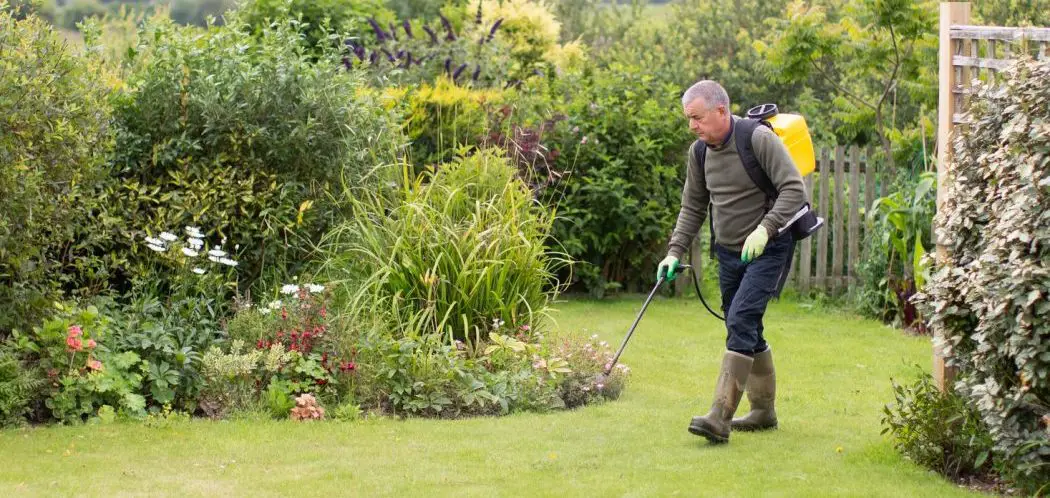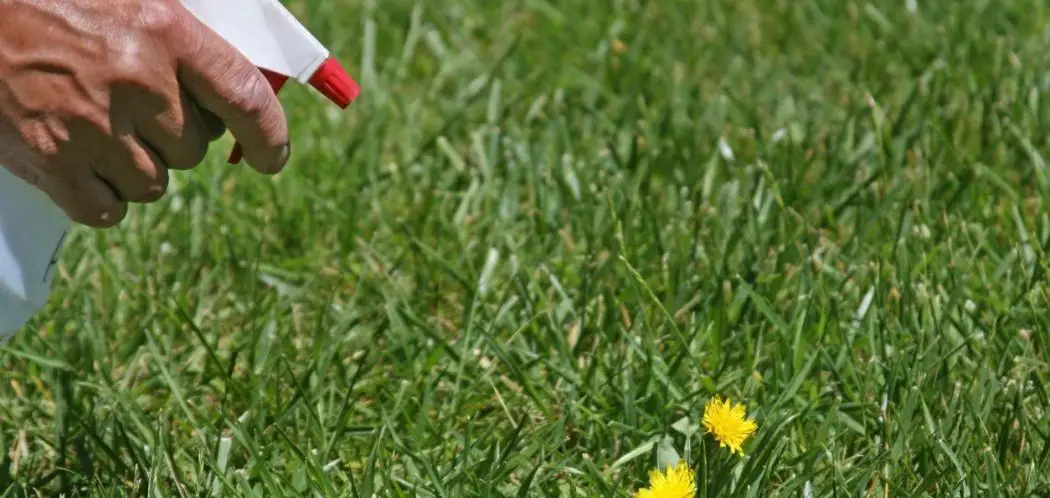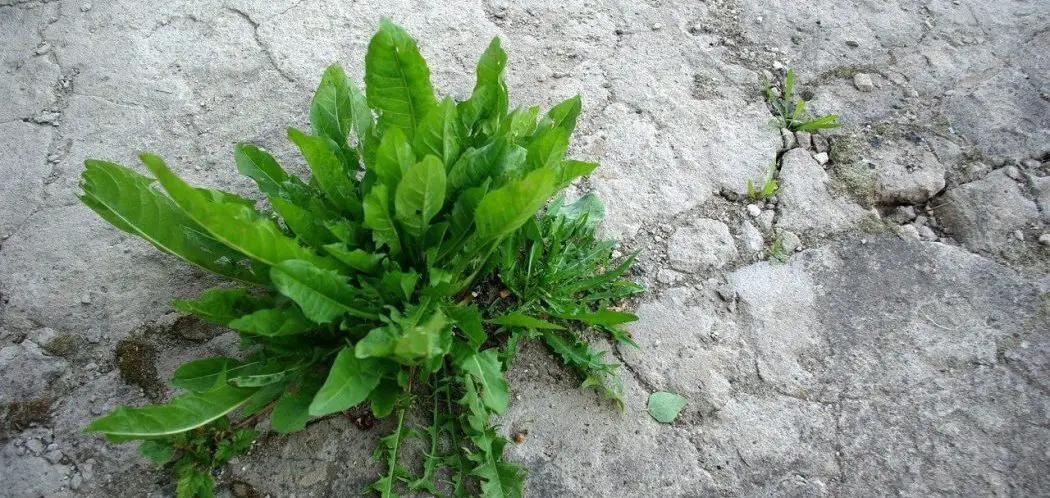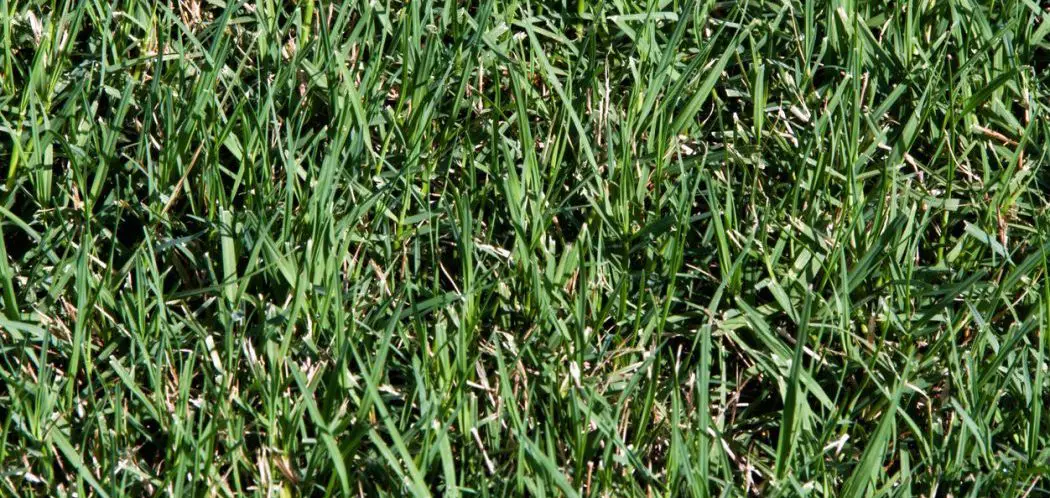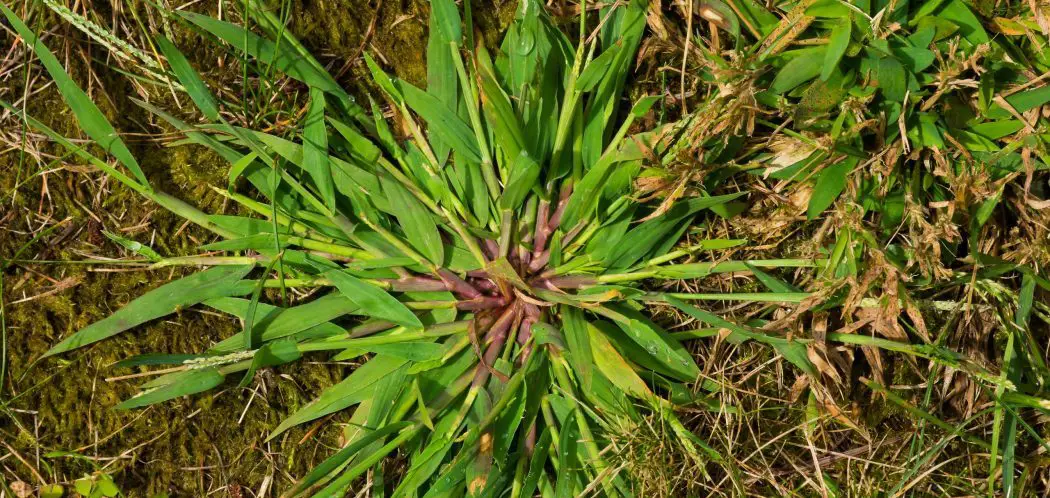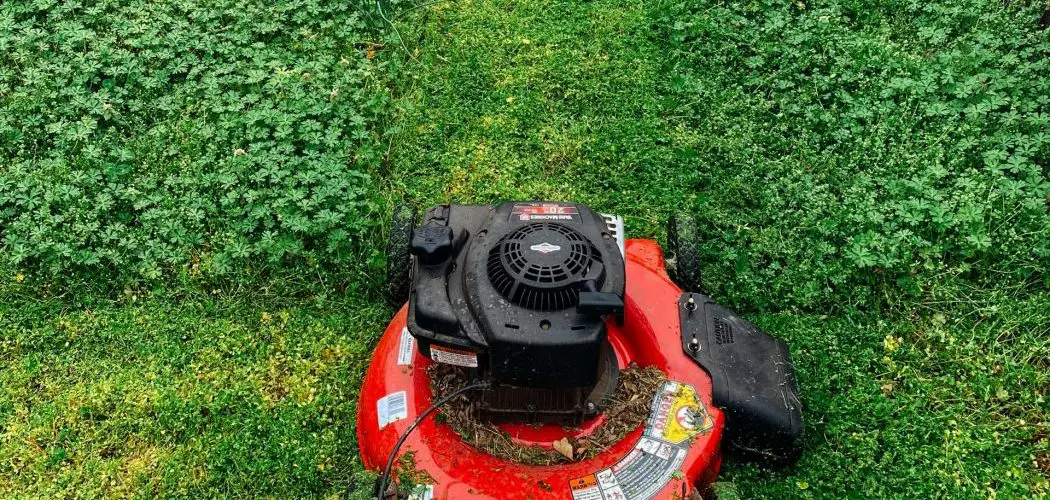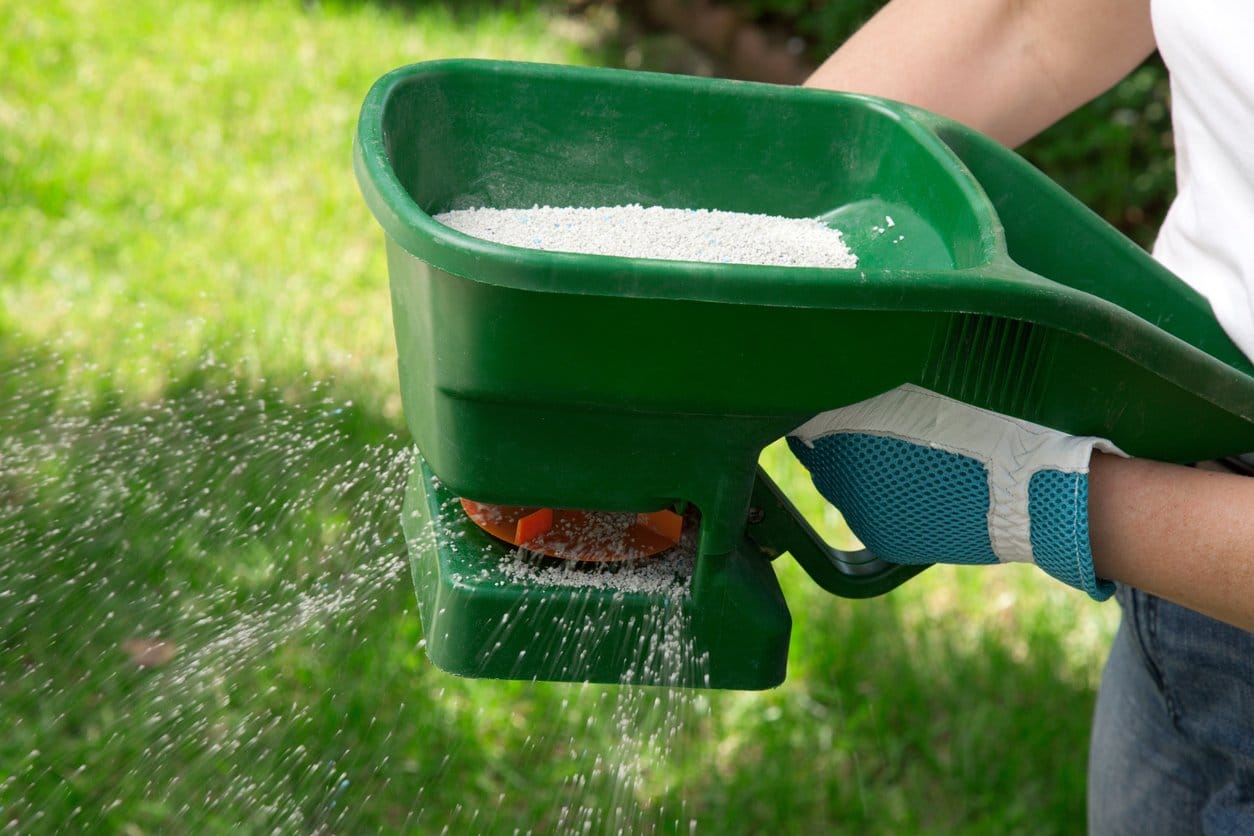People often want to know whether they can spray weeds in the yard when it’s hot outside. The important thing to remember is that during hot temperatures that are above 90 degrees, the weeds stop growing. In fact, your lawn also goes into dormancy as a measure to protect itself. During this time, if you cut your grass too short or apply weed killer, you can stress the lawn and create patches that allow weeds to grow in.
The short answer…
You should not spray weeds when it’s 90 degrees or more outside. In higher temperatures, weeds stop growing which limits the effectiveness of a herbicide. Herbicides will work best when weeds have stomata open during active growth which is typically when temperatures range from 70 to 85 degrees Fahrenheit.
When the weeds are actively growing, the herbicide is able to enter the tiny pores of the stomata and move through the weed to kill it. If they aren’t growing, you aren’t able to kill it completely, so you will need to repeat the job later.
Why You Should Avoid Spraying in High Heat
Herbicides work best when weeds are actively growing, which is typically when temperatures range from 70 to 85 degrees Fahrenheit. They can grow when it is hotter outside, but they are often more tolerant of herbicides at higher temperatures. They can adapt to the conditions and develop a layer of thick wax on the surface that prevents the herbicide from being absorbed. Even if you use herbicides that have been shown to be more effective at higher temperatures, they can damage the grass.
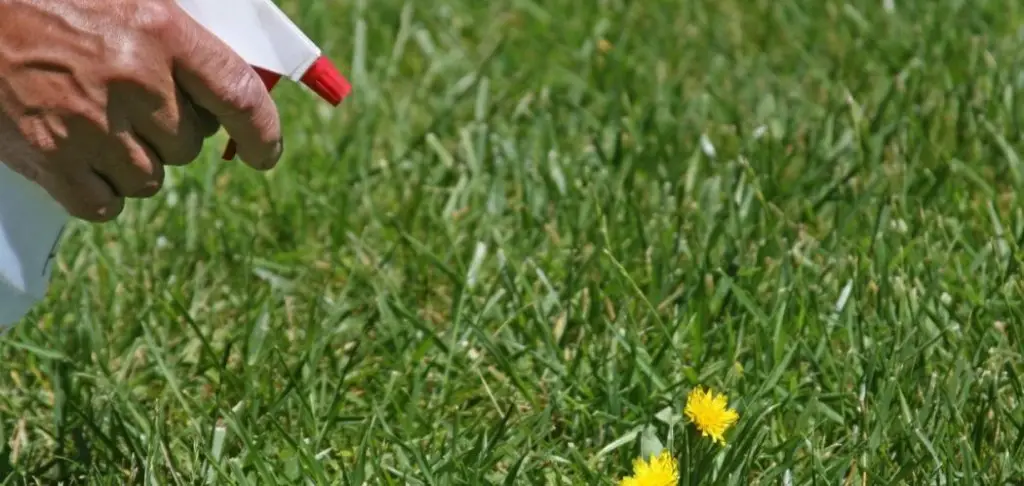
Herbicide Temperature Threshold
Most herbicides are rated up to 85 degrees Fahrenheit. Once it gets hotter, they become less effective. When you plan to use herbicides, it is important to identify the weeds accurately, as well as the type of grass you have. Weed killers are made for specific types of grasses and weeds. It is also important to know the life cycle of the weeds you want to kill. Some are annual, some are biennial, and others are perennial.
- Roundup for Lawns is rated for between 53 and 77 degrees Fahrenheit.
- Another herbicide, Scotts Turf Builder Weed Killer, works best when temperatures are in the 60s to the 80s. It doesn’t do well if temperatures go above 90.
- Generally speaking, make sure that you use herbicides when it is cooler than 90 degrees Fahrenheit outside for the best results.
Volatilization
Volatilization is the process where an herbicide is applied and it is converted from a liquid or solid state to a gas or vapor state. When this happens, the herbicide can move away from the weeds; it is designed to kill and impact other areas. It is affected by the wind speed, moisture, and air temperature, and the volatilization rate often increases during hot weather.
When the herbicide droplets volatilize, they can cause physical drift. This is where they move before they are deposited on the weeds. This has a tendency to happen when the temperatures are higher and the wind blows more than 10 miles an hour, so it is best to use herbicides when it is cooler than 90 degrees Fahrenheit.
Common Herbicide Burn
When you use herbicides in higher temperatures, your grass can suffer from herbicide burn. It affects grass similarly to fertilizer burn. The herbicide spray residue on the grass will suck the water out and dry out the blades of grass. A higher concentration of herbicides will take more water from the grass, and herbicide spray with a higher concentration of herbicide can also cause burn. If you spray in high temperatures, it can lead to herbicide burn as well.
You will notice herbicide burn because the grass might turn yellow. It can also show stripes that are colorless throughout the turf. This condition is called chlorosis. Your grass blades can also turn brown and die, and you might notice the blades wilting and curling. You can lose large patches of grass, which will actually leave room for more weeds to grow.
Why You Should Avoid Spray During Low Humidity
The way that herbicides work is that they get into the weeds through the tiny pores in the stomata when the weeds are growing. Although many weeds are resistant to droughts, they don’t grow as actively during dry periods. When there is moisture in the air, the plants receive more moisture, which increases their metabolism and their growth rate. If it is dry out, the herbicide could sit on the surface of the weed and the soil, but it won’t penetrate. This makes it less effective.
Considering the Condition of Your Lawn
When you decide to spray your lawn to control the weeds, it is important that your lawn is in good, healthy condition. If it is already stressed, the weed killer can stress it further. When your lawn is healthy, you can spray the weed killer and your lawn will be able to handle it better.
Drought stress occurs when water is limited. There are different stages that you need to pay attention to. In the first stage, the lawn will show footprints as you walk through. This is a sign that your lawn is too dry. You will want to water it. If it goes to the next stage, the lawn will start to appear patchy. It will slow its growth, and some of the blades of grass will fold over to conserve water. You can still bring your lawn back to life by watering it.
In the next stage, your lawn will stop growing and turn a greenish brown color. It will basically prepare for dormancy, and any treatment you do can damage the lawn significantly. At this time, you need to have a big rainstorm for a few days with heavy rainfall or you can use irrigation to saturate the lawn. It can take up to two weeks for it to recover. The final stage is when it goes dormant. It will take a lot of work to bring it back, including three weeks of regular watering and checking the soil
If you try to use weed killer spray during the later stages of drought stress, it will likely damage your grass. Herbicides add stress to the lawn, so you want to make sure that your grass is healthy and strong before you spray. You should consider the condition of your lawn, and make sure that you use herbicides in the best possible conditions, according to the manufacturer’s recommendations.
Here are some of my favorite lawn care products
Thanks a lot for making it to the end of this post! I hope you found it useful. Here are some lawn care products that I use and that I think you’ll also find helpful. These are affiliate links, so if you do decide to use any of them, I’ll earn a commission.
In all honesty, these are some of the basic products that I use and recommend to everyone.
Broadcast Spreader
This Scotts Elite dual rotary spreader is not a professional grade model but it’s excellent for homeowners.
I really like the edge guard on it. It’s really easy to switch on and off so it’s great for going around my driveway and flower beds.
If you’re not looking to spend hundreds of dollars, I’d definitely recommend this model. It spreads out a wide path and is great quality for the cost.
Backpack Sprayer
This 4-Gallon sprayer is my absolute favorite. It sprays for a really long time. I’ve had this sprayer for quite a while and I’ve never had the battery run out.
The adjustable pressure switch is a really import feature to me.
You can order a lot of accessories for this model but I’ve never really found much of a need for it.
Head Aerator
Hand aerators are great for small spots if you’ve got construction debris or a spot that constantly dries out.
You can also fill these holes with organic matter that will hold a bit more moisture.
This one by Yard Butler is an absolute bargain. It pulls nice long cores. I also use it for taking soil samples around the yard!

